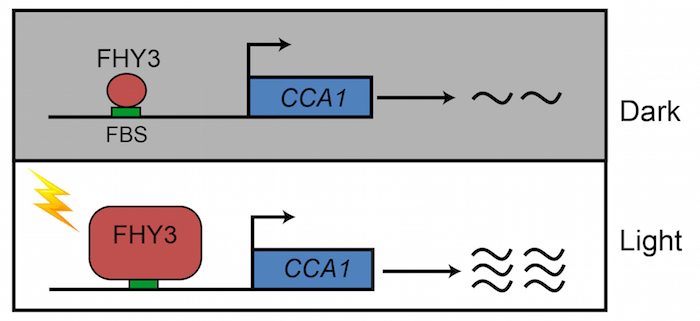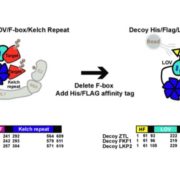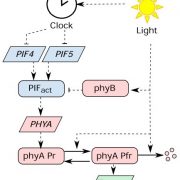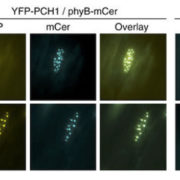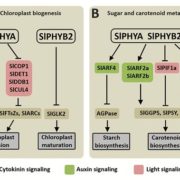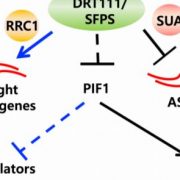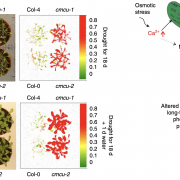How Light Activates the Plant Circadian Clock
Liu et al. discover how members of the photosensory-signaling pathway orchestrate circadian clock gene expression to regulate plant responses to daily changes in the light environment. Plant Cell https://doi.org/10.1105/tpc.19.00981
Background: Plants use an endogenous time-keeping mechanism known as the circadian clock to measure daily and seasonal changes in the environment and to adjust their physiology and development accordingly. In Arabidopsis thaliana, the central oscillator of the clock is composed of multiplexed transcriptional feedback loops in which the morning-phased transcription factors CCA1 and LHY are key components of the central oscillator. These transcription factors trigger and set the phase of various clock-regulated activities by regulating the expression of other clock-associated genes. Light is a key environmental signal that sets and activates the clock.
Question: It has long been known that the expression of both CCA1 and LHY is induced by light signals, but the underlying molecular mechanism is unknown. How does light trigger the expression of CCA1 and get the clock to start ticking?
Findings: The phytochrome signal transducers FHY3 and FAR1 are required for light-induced CCA1 expression. Light promotes the accumulation of FHY3 and FAR1, which directly bind to the CCA1 promoter and activate its expression. Notably, the light-signaling repressor PIF5 and the evening expressed protein TOC1 repress CCA1 expression. Moreover, PIF5 and TOC1 physically interact with FHY3 and FAR1, thereby repressing their transcriptional activation activity on CCA1. Under diurnal cycle conditions, the high levels of FHY3 and FAR1 and low levels of PIF5 and TOC1 at the end of the evening contribute to the peak expression of the morning gene CCA1 before dawn. These findings reveal how environmental light signals integrate with the internal clock to coordinately regulate clock activity and clock resetting in response to daily changes in light in the ambient environment.
Next steps: The circadian clock enables plants to anticipate daily environmental and seasonal changes, thus improving their growth and fitness. Nearly every aspect of plant growth, development, biotic, and abiotic stress responses is controlled by the clock, providing crops with regional adaptability, thereby affecting yield and quality. We wish to know whether crop plants use similar mechanisms to set the clock. Such knowledge could facilitate the breeding of crops with more broad regional adaptability, high yields, and better quality.
Yang Liu, Mengdi Ma, Gang Li, Li Yuan, Yurong Xie, Hongbin Wei, Xiaojing Ma, Quanquan Li, Paul F. Devlin, Xiaodong Xu, and Haiyang Wang (2020). Transcription Factors FHY3 and FAR1 Regulate Light-induced CIRCADIAN CLOCK ASSOCIATED1 Gene Expression in Arabidopsis. Plant Cell: DOI: https://doi.org/10.1105/tpc.19.00981


